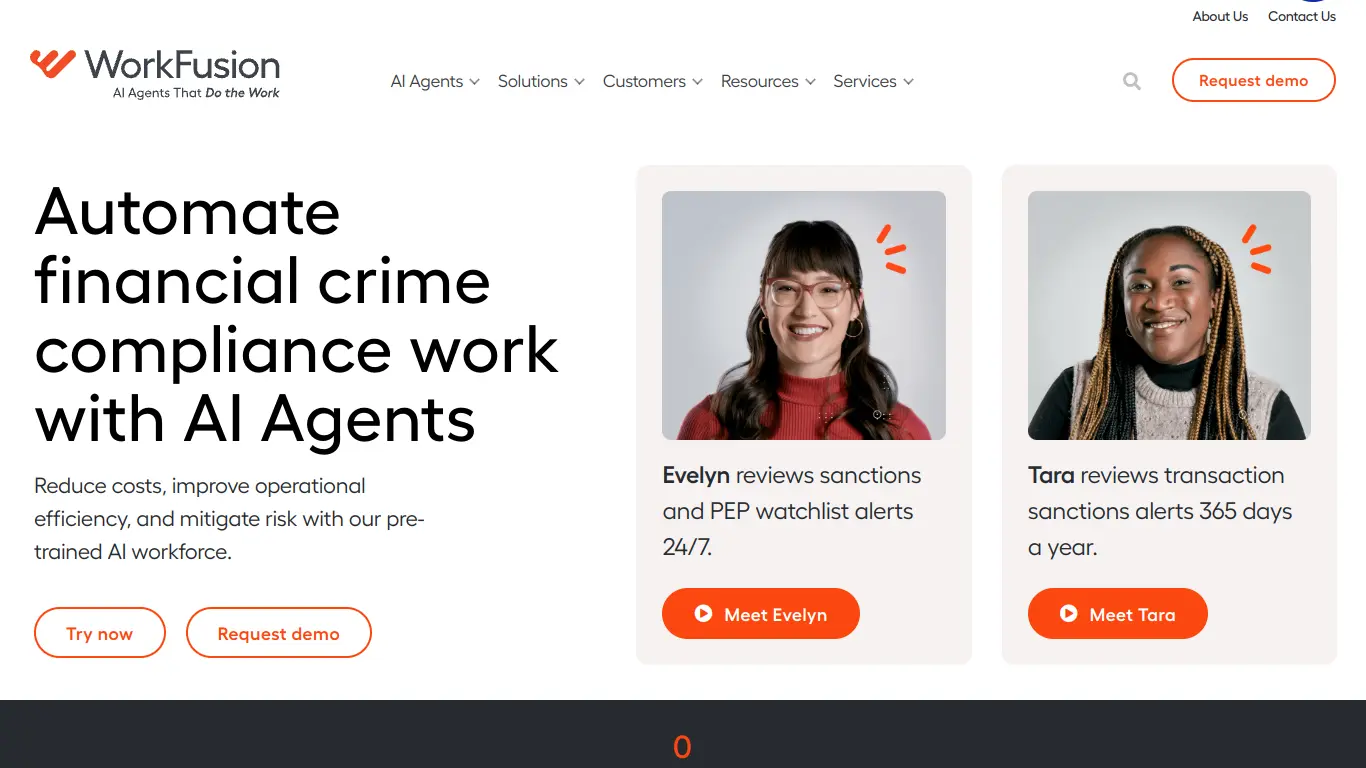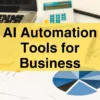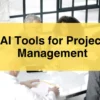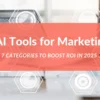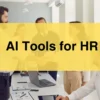WorkFusion offers AI-powered automation solutions for regulated industries, specializing in document processing, AML, KYC, and compliance workflows.
Introduction to WorkFusion
Automation has become more than just a buzzword—it’s a necessity for organizations aiming to stay competitive while managing increasing operational complexities. If you’re drowning in repetitive tasks, struggling with document processing, or looking to enhance your compliance procedures, you’ve likely been searching for a solution that can truly transform these challenges. This is where WorkFusion enters the picture, offering a sophisticated approach to intelligent automation that goes beyond traditional robotic process automation (RPA).
What is WorkFusion and its Purpose?
WorkFusion is an enterprise-grade intelligent automation platform that combines AI, machine learning, and RPA to help businesses automate complex business processes, particularly in document-heavy industries. Unlike basic automation tools that simply perform repetitive tasks, WorkFusion specializes in what they call “knowledge work automation”—the kind that typically requires human judgment and expertise.
The platform’s primary purpose is to help organizations digitally transform their operations by automating complex, high-volume business processes that traditionally required significant manual effort. WorkFusion’s AI-powered digital workers can handle everything from document processing and data extraction to compliance monitoring and risk management.
What sets WorkFusion apart is its focus on creating pre-packaged, ready-to-deploy AI-driven automation solutions specifically designed for highly regulated industries like banking, financial services, insurance, and healthcare.
Who is WorkFusion Designed For?
WorkFusion has built its platform primarily for:
- Large enterprises in regulated industries: Particularly banking, financial services, and insurance companies dealing with complex compliance requirements
- Operations leaders: Those responsible for optimizing business processes and reducing operational costs
- Risk and compliance teams: Professionals tasked with ensuring regulatory compliance and fraud prevention
- IT directors: Decision-makers looking to implement enterprise-scale automation solutions
- Business transformation executives: Leaders driving digital transformation initiatives
The platform is especially valuable for organizations managing high-volume, document-intensive processes that require accuracy, consistency, and compliance with changing regulations. If your business handles thousands of customer documents, monitors transactions for fraud patterns, or must comply with strict regulatory requirements, WorkFusion’s solutions are designed specifically with your challenges in mind.
Getting Started with WorkFusion: How to Use It
Getting started with WorkFusion involves several key steps:
- Assessment and scoping: WorkFusion typically begins with an assessment of your organization’s automation needs and identification of high-value use cases.
- Solution selection: Based on your industry and specific requirements, you’ll choose from WorkFusion’s pre-built solutions:
- Document Intelligence Platform
- Anti-Money Laundering (AML) solutions
- Know Your Customer (KYC) automation
- Sanctions screening automation
- Account opening automation
- Claims processing solutions
- Implementation and configuration: WorkFusion’s professional services team works with your organization to implement the selected solutions, configure them to your specific business requirements, and integrate them with your existing systems.
- Training and adoption: WorkFusion provides training for your team to effectively manage and maintain the automation solutions.
- Continuous improvement: The platform includes analytics and monitoring tools to help you track performance and identify opportunities for further optimization.
Unlike some self-service automation tools aimed at citizen developers, WorkFusion’s enterprise focus means implementation typically involves collaboration with their professional services team to ensure proper deployment and integration with existing systems.
WorkFusion’s Key Features and Benefits
Core Functionalities of WorkFusion
WorkFusion’s platform comprises several powerful core capabilities that work together to deliver comprehensive automation solutions:
- Pre-built AI Digital Workers: These are ready-to-deploy automation solutions for specific business functions, including:
- IRAS for intelligent document processing
- ATOM for AML operations
- KRIS for KYC processes
- SIRO for sanctions screening
- And more industry-specific solutions
- Document Intelligence: Advanced document understanding capabilities that can:
- Extract structured data from unstructured documents
- Classify document types automatically
- Validate extracted information against business rules
- Learn from human feedback to continuously improve accuracy
- AI/ML Models: Sophisticated machine learning models that:
- Detect patterns in data
- Make predictions based on historical information
- Identify anomalies and potential risks
- Improve decision-making processes
- Process Automation: End-to-end process automation capabilities that:
- Orchestrate complex workflows
- Connect multiple systems and applications
- Handle exceptions through human-in-the-loop mechanisms
- Scale according to workload demands
- Control Tower: Centralized management console that provides:
- Real-time performance monitoring
- Analytics and insights
- Governance and compliance controls
- Resource management
Advantages of Using WorkFusion
WorkFusion offers several significant benefits that distinguish it from other automation solutions:
- Reduced Implementation Time: With pre-built AI solutions, organizations can deploy automation faster than developing custom solutions from scratch. WorkFusion claims implementation times can be reduced by up to 70%.
- Higher Accuracy: WorkFusion’s AI models are specifically trained for particular industry use cases, resulting in higher accuracy rates (often 95%+) compared to generic automation tools.
- Lower Cost of Ownership: By combining document intelligence, workflow automation, and AI in one platform, organizations can avoid the costs of integrating multiple point solutions.
- Regulatory Compliance: Built-in compliance controls and audit trails help organizations meet stringent regulatory requirements in highly regulated industries.
- Scalability: The platform can handle millions of transactions and documents, scaling up during peak periods without degradation in performance.
- Continuous Improvement: WorkFusion’s AI models learn from human feedback, continuously improving their accuracy and reducing the need for manual intervention over time.
Main Use Cases and Applications
WorkFusion has proven particularly effective in several key application areas:
- Anti-Money Laundering (AML) Operations:
- Alert investigation automation
- Transaction monitoring
- Customer due diligence
- Suspicious activity reporting
- Know Your Customer (KYC) Processes:
- Customer onboarding
- Periodic KYC reviews
- ID verification
- Beneficial ownership determination
- Sanctions Screening:
- Name screening against watchlists
- False positive reduction
- Sanctions alert investigation
- Regulatory reporting
- Document Processing:
- Automated data extraction from complex documents
- Document classification and routing
- Data validation and enrichment
- Integration with downstream systems
- Claims Processing (Insurance):
- Claims intake and classification
- Information extraction from claims documents
- Claims adjudication support
- Payment processing
- Account Opening and Maintenance:
- Customer application processing
- Document verification
- Risk assessment
- Account setup automation
These use cases demonstrate WorkFusion’s specialized focus on high-value, complex processes in regulated industries where accuracy, compliance, and efficiency are paramount.
Exploring WorkFusion’s Platform and Interface
User Interface and User Experience
WorkFusion’s platform interface is designed with enterprise users in mind, balancing comprehensive functionality with usability:
Control Tower Dashboard:
The central hub of the WorkFusion platform presents a clean, information-rich dashboard that gives users immediate visibility into:
- Automation performance metrics
- Process throughput statistics
- Exception queues requiring attention
- System health indicators
The interface uses intuitive visualizations including charts, graphs, and status indicators to provide at-a-glance understanding of automation performance.
Process Designer:
For creating and modifying automation workflows, WorkFusion offers a visual process designer that:
- Uses a familiar flowchart-like interface
- Allows drag-and-drop configuration of process steps
- Supports decision points and conditional logic
- Enables human-in-the-loop intervention points
Document Intelligence Interface:
When working with documents, users benefit from:
- Visual document annotation tools
- Side-by-side comparison of extracted data and source documents
- Confidence scoring for extracted fields
- Exception handling queues for human review
Analytics and Reporting:
The platform provides robust reporting capabilities including:
- Customizable dashboards
- Drill-down analytics
- Exportable reports
- Performance trend analysis
While WorkFusion’s interface is sophisticated, it reflects the enterprise nature of the platform. It’s designed for professional users rather than casual “citizen developers,” with an emphasis on governance, control, and scalability over simplicity. The learning curve is steeper than consumer-grade applications, but appropriate for the target users who are typically automation professionals and business analysts.
Platform Accessibility
WorkFusion offers several deployment options to meet diverse enterprise requirements:
1. Cloud Deployment:
- Hosted on secure cloud infrastructure
- Managed service option available
- Regular updates and maintenance handled by WorkFusion
- Elastic scaling based on demand
2. On-Premises Deployment:
- Available for organizations with strict data residency requirements
- Runs within the customer’s own data center
- Supports air-gapped environments for high-security scenarios
- Requires more IT resources to maintain
3. Hybrid Options:
- Combines cloud and on-premises components
- Allows sensitive data to remain on-premises while leveraging cloud capabilities
- Flexible configuration based on security and operational needs
Access Controls and Security:
WorkFusion places strong emphasis on security and access management:
- Role-based access controls
- Multi-factor authentication support
- Detailed audit logging
- Data encryption (both at rest and in transit)
- Compliance with SOC 2, GDPR, and other security frameworks
Integration Capabilities:
The platform is designed to work within complex enterprise ecosystems:
- API-based integration with existing systems
- Pre-built connectors for common enterprise applications
- Support for various data formats and protocols
- Secure credential management for connected systems
WorkFusion’s approach to accessibility prioritizes enterprise requirements like security, control, and integration capabilities over consumer-style convenience, reflecting its focus on large organizations in highly regulated industries.
WorkFusion Pricing and Plans
Subscription Options
WorkFusion’s pricing model reflects its enterprise focus, with subscription options tailored to large-scale automation deployments. While the company doesn’t publish specific pricing on its website (common among enterprise software providers), here’s what we know about their approach:
Solution-Based Pricing:
Rather than a one-size-fits-all pricing model, WorkFusion typically prices based on the specific solution package you implement:
- Document Intelligence Platform: Priced based on document volume and complexity
- AML Solutions: Typically priced per alert or transaction volume
- KYC Automation: Often priced per customer onboarding or review
- Sanctions Screening: Priced according to screening volume
Subscription Tiers:
WorkFusion generally offers several tiers of service:
| Tier | Typical Inclusions | Best For |
|---|---|---|
| Standard | Core automation capabilities, limited scale | Mid-sized organizations beginning their automation journey |
| Enterprise | Full platform capabilities, higher throughput, additional support | Large enterprises with significant automation needs |
| Premium | Highest throughput, dedicated support, custom model training | Global organizations with mission-critical automation requirements |
Pricing Factors:
Several factors influence the final pricing:
- Transaction or document volume
- Number of processes automated
- Deployment model (cloud vs. on-premises)
- Level of professional services required
- Length of contract commitment
Contract Terms:
WorkFusion typically operates on annual or multi-year subscription contracts, with discounts available for longer commitments. Enterprise agreements often start in the six-figure range annually, reflecting the high-value nature of the processes being automated.
Free vs. Paid Features
WorkFusion’s enterprise focus means they don’t offer a traditional “freemium” model like many SaaS products. However, they do provide several ways to experience the platform before making a full commitment:
Evaluation Options:
- Proof of Concept (POC): WorkFusion offers limited-scope POCs for qualified enterprises to test the platform with their own use cases
- Demo Environment: Prospective customers can access demonstration environments with sample data
- Workshop Sessions: WorkFusion conducts assessment workshops to help organizations identify automation opportunities
What’s Included in Paid Subscriptions:
Full subscriptions typically include:
- Core Platform Access:
- Document intelligence capabilities
- Process automation tools
- AI/ML model access
- Control Tower dashboard
- Support Services:
- Technical support (tiered based on subscription level)
- Regular platform updates
- Knowledge base access
- Community forum access
- Professional Services (often priced separately):
- Implementation assistance
- Process design consulting
- Custom integration development
- Training programs
- Add-on Capabilities (may require additional fees):
- Advanced analytics
- Custom AI model development
- Additional environments (dev/test/production)
- Premium connectors for specialized systems
For organizations interested in WorkFusion, the best approach is to contact their sales team for a customized quote based on your specific requirements. Many customers begin with a focused solution for a particular use case and expand to additional processes as they demonstrate ROI.
WorkFusion Reviews and User Feedback
Pros and Cons of WorkFusion
Based on customer feedback across various review platforms and case studies, here’s a balanced view of WorkFusion’s strengths and limitations:
Pros:
✅ Industry-Specific Solutions: Users consistently praise WorkFusion’s pre-built solutions for specific industries, particularly in financial services and insurance. These solutions deliver faster time-to-value compared to building automation from scratch.
✅ Document Intelligence Capabilities: The platform’s ability to accurately extract and process information from complex, unstructured documents is frequently highlighted as superior to more generic OCR and document processing tools.
✅ AI/ML Sophistication: Many users note that WorkFusion’s AI models deliver higher accuracy rates and require less training than competitors, particularly for specialized use cases like sanctions screening and KYC.
✅ Scalability: Enterprise users appreciate the platform’s ability to handle millions of transactions without performance degradation—a critical factor for large financial institutions.
✅ Compliance Features: Built-in governance, audit trails, and compliance controls are significant advantages for organizations in regulated industries.
Cons:
❌ Implementation Complexity: Several reviews mention that WorkFusion implementations can be complex and require significant professional services support, making rapid deployment challenging.
❌ Learning Curve: The platform’s sophisticated capabilities come with a steeper learning curve compared to simpler RPA tools, requiring dedicated training for effective use.
❌ Cost Structure: Multiple reviews cite the high cost of enterprise deployments, putting WorkFusion out of reach for smaller organizations with limited automation budgets.
❌ Customization Requirements: Some users note that while the pre-built solutions provide a solid foundation, significant customization is often needed to address specific organizational requirements.
❌ Technical Resources Needed: Organizations frequently mention the need for specialized skills to maintain and optimize WorkFusion implementations, creating potential resource challenges.
User Testimonials and Opinions
Customer testimonials provide valuable insights into real-world experiences with WorkFusion:
“After implementing WorkFusion’s AML solution, we’ve seen a 70% reduction in false positives and cut our alert investigation time in half. The AI continues to improve, allowing our team to focus on the most complex cases.” — Director of Compliance, Global Bank
“The document processing capabilities are impressive. We’re handling thousands of complex insurance claims documents daily with accuracy rates above 95%, which has transformed our claims processing operation.” — VP of Operations, Insurance Provider
“Implementation was more complex than we initially anticipated, but the ROI has been substantial. We’ve automated over 65% of our KYC process, reducing processing time from days to hours.” — Head of Customer Onboarding, Financial Services Firm
“WorkFusion’s pre-built solutions gave us a head start, but we still needed significant customization for our specific requirements. Be prepared for a substantial investment in both the platform and professional services.” — CIO, Regional Bank
From these testimonials and broader industry feedback, a consistent picture emerges: WorkFusion delivers significant value for large enterprises in regulated industries willing to make the investment in implementation and customization. The platform excels at complex, document-heavy processes where AI can dramatically improve efficiency and accuracy.
Organizations considering WorkFusion should realistically assess their internal capabilities, automation maturity, and budget constraints. The platform delivers exceptional results for its target market but may be excessive for organizations with simpler automation needs or limited resources.
WorkFusion Company and Background Information
About the Company Behind WorkFusion
WorkFusion was founded in 2010, emerging from MIT’s Computer Science and Artificial Intelligence Laboratory (CSAIL) with a vision to create AI-powered automation technology that could handle complex business processes. Over the past decade, the company has evolved from a general automation platform to a provider of specialized intelligent automation solutions for regulated industries.
Company Timeline:
| Year | Milestone |
|---|---|
| 2010 | Founded in New York City |
| 2014 | Secured Series B funding of $15 million |
| 2016 | Launched RPA Express, expanding accessibility of automation |
| 2018 | Raised $50 million in Series E funding, focusing on AI-driven automation |
| 2020 | Shifted strategy to industry-specific “packaged solutions” approach |
| 2021 | Released pre-built digital workers for specific business functions |
| 2023 | Continued expansion in banking, financial services, and insurance sectors |
Leadership and Expertise:
WorkFusion is led by a team with deep expertise in artificial intelligence, enterprise software, and financial services. The current CEO, Adam Famularo, joined in 2021, bringing extensive experience scaling enterprise software companies. The company’s leadership team includes veterans from IBM, Microsoft, UiPath, and major financial institutions.
The company maintains a strong focus on research and development, with a significant portion of its team dedicated to advancing its AI and machine learning capabilities. This R&D focus has resulted in numerous patents related to intelligent automation, particularly for document processing and anomaly detection.
Company Size and Reach:
WorkFusion has grown to approximately 500+ employees globally, with headquarters in New York City and additional offices in London, Singapore, Minsk, and other global locations. The company serves enterprise customers across more than 50 countries, with particular strength in North America, Europe, and Asia-Pacific regions.
While privately held, WorkFusion has raised over $340 million in venture funding from investors including Georgian Partners, Alpha Intelligence Capital, and Hawk Equity. This substantial investment has funded both product development and global expansion.
Industry Recognition:
WorkFusion has received recognition from industry analysts and publications:
- Named a Leader in the Forrester Wave™ for Document-Focused RPA
- Recognized in Gartner’s Magic Quadrant for RPA
- Received the AI Breakthrough Award for Best Intelligent Document Processing Solution
- Featured in the Forbes AI 50 list of promising artificial intelligence companies
The company has strategically positioned itself at the intersection of RPA, artificial intelligence, and document intelligence, with a particular focus on solving complex compliance and operational challenges in highly regulated industries. This specialized focus distinguishes WorkFusion from broader automation platforms and has driven its adoption among global financial institutions and insurance companies.
WorkFusion Alternatives and Competitors
Top WorkFusion Alternatives in the Market
When considering intelligent automation platforms similar to WorkFusion, several alternatives stand out, each with distinct strengths and focus areas:
- UiPath
- Focus: End-to-end automation platform with strong RPA capabilities
- Strengths: Large marketplace of pre-built components, strong community support, user-friendly design studio
- Ideal for: Organizations seeking a comprehensive automation platform with an emphasis on accessibility for citizen developers
- Automation Anywhere
- Focus: Cloud-native intelligent automation platform
- Strengths: Strong cloud architecture, document processing capabilities, and analytics
- Ideal for: Enterprises looking for scalable, cloud-based automation with robust security features
- Blue Prism (now part of SS&C)
- Focus: Enterprise-grade, secure automation for regulated industries
- Strengths: Governance, scalability, and enterprise-grade security
- Ideal for: Large organizations with strict governance requirements and complex process needs
- ABBYY
- Focus: Document intelligence and content IQ
- Strengths: Advanced document understanding, classification, and extraction capabilities
- Ideal for: Organizations primarily focused on document-heavy processes rather than end-to-end automation
- Hyperscience
- Focus: Machine learning automation platform specializing in document processing
- Strengths: Sophisticated ML models for complex documents, human-in-the-loop capabilities
- Ideal for: Companies dealing with complex, variable document formats requiring high accuracy
- Appian
- Focus: Low-code automation platform with process automation capabilities
- Strengths: Integration of workflow, case management, and RPA in a unified platform
- Ideal for: Organizations looking to build custom applications and automate processes simultaneously
- IBM Automation
- Focus: Comprehensive business automation platform with AI capabilities
- Strengths: Integration with IBM Watson, enterprise scalability, advanced analytics
- Ideal for: Large enterprises already invested in the IBM ecosystem
WorkFusion vs. Competitors: A Comparative Analysis
To better understand how WorkFusion stacks up against key competitors, let’s examine several critical factors:
Document Intelligence Capabilities:
| Platform | Document Understanding | Pre-trained Models | Accuracy on Complex Documents | Learning Capabilities |
|---|---|---|---|---|
| WorkFusion | ★★★★★ | ★★★★★ | ★★★★★ | ★★★★☆ |
| UiPath | ★★★★☆ | ★★★☆☆ | ★★★☆☆ | ★★★☆☆ |
| Automation Anywhere | ★★★★☆ | ★★★☆☆ | ★★★☆☆ | ★★★☆☆ |
| ABBYY | ★★★★★ | ★★★★☆ | ★★★★☆ | ★★★★☆ |
| Hyperscience | ★★★★★ | ★★★★☆ | ★★★★★ | ★★★★★ |
WorkFusion’s particular strength in document intelligence, especially for financial services documents, places it among the top performers in this category.
Industry-Specific Solutions:
| Platform | Financial Services Focus | Pre-built Solutions | Compliance Features | Regulatory Expertise |
|---|---|---|---|---|
| WorkFusion | ★★★★★ | ★★★★★ | ★★★★★ | ★★★★★ |
| UiPath | ★★★☆☆ | ★★★★☆ | ★★★☆☆ | ★★★☆☆ |
| Blue Prism | ★★★★☆ | ★★★☆☆ | ★★★★☆ | ★★★★☆ |
| Appian | ★★★★☆ | ★★★☆☆ | ★★★★☆ | ★★★★☆ |
| IBM Automation | ★★★★☆ | ★★★★☆ | ★★★★☆ | ★★★★☆ |
WorkFusion’s targeted focus on financial services, particularly AML, KYC, and sanctions screening, distinguishes it from more generalized platforms.
Implementation and Accessibility:
| Platform | Ease of Implementation | Citizen Developer Focus | Professional Services Required | Time to Value |
|---|---|---|---|---|
| WorkFusion | ★★★☆☆ | ★★☆☆☆ | High | Medium-Long |
| UiPath | ★★★★☆ | ★★★★☆ | Medium | Medium |
| Automation Anywhere | ★★★★☆ | ★★★★☆ | Medium | Medium |
| Blue Prism | ★★★☆☆ | ★★☆☆☆ | High | Long |
| Hyperscience | ★★★☆☆ | ★★☆☆☆ | High | Medium |
WorkFusion tends to require more specialized expertise and professional services involvement compared to platforms like UiPath or Automation Anywhere, which have invested heavily in accessibility for citizen developers.
Key Differentiators:
- WorkFusion: Stands out for its pre-built AI solutions specifically designed for financial services use cases like AML, sanctions screening, and KYC; offers deep domain expertise in regulatory compliance.
- UiPath: Excels in providing an accessible, comprehensive automation platform with strong community support and a wide range of integration options.
- Automation Anywhere: Differentiates with its cloud-native architecture and strong analytics capabilities.
- ABBYY: Specializes in document intelligence with exceptional accuracy for complex documents across multiple languages.
- Blue Prism: Focuses on enterprise-grade security, governance, and scalability for mission-critical processes.
When choosing between WorkFusion and alternatives, organizations should consider:
- The complexity and volume of documents they need to process
- Their industry-specific requirements (particularly regulatory compliance needs)
- Internal technical resources and automation expertise available
- Budget constraints and expected ROI timeframe
- Integration requirements with existing systems
For organizations in banking, financial services, and insurance dealing with complex document processing and stringent compliance requirements, WorkFusion’s specialized focus often provides advantages over more general-purpose platforms. However, companies with broader automation needs or limited specialized resources might find platforms like UiPath or Automation Anywhere more accessible starting points.
WorkFusion Website Traffic and Analytics
Website Visit Over Time
WorkFusion’s website traffic shows interesting patterns that reflect the company’s positioning in the enterprise automation market. While not as high-volume as some consumer-facing tech companies, WorkFusion’s traffic indicates a focused B2B marketing strategy targeting specific industries.
According to available analytics data:
📈 Monthly Traffic Trend (Estimated):
- Average monthly visits: 70,000 – 90,000
- Year-over-year growth: Approximately 15-20%
- Seasonal patterns: Higher traffic during Q4 and Q1, likely aligned with enterprise budget planning cycles
The traffic pattern reflects WorkFusion’s enterprise focus, with steady growth rather than dramatic spikes that consumer products might experience. The website sees increased activity around major industry events and following significant product announcements.
Geographical Distribution of Users
WorkFusion’s global presence is reflected in the geographic distribution of its website visitors:
🌎 Top Visitor Locations:
| Region | Percentage of Traffic | Key Markets |
|---|---|---|
| North America | 40-45% | United States, Canada |
| Europe | 25-30% | UK, Germany, Switzerland |
| Asia-Pacific | 15-20% | Singapore, Australia, Hong Kong |
| Middle East | 5-8% | UAE, Saudi Arabia |
| Other Regions | 5-7% | Various |
This distribution aligns with WorkFusion’s focus on global financial centers and regions with concentrated banking and insurance operations. The stronger presence in North America and Europe reflects both the company’s headquarters location and the concentration of financial services organizations in these regions.
Main Traffic Sources
Understanding how visitors find WorkFusion provides insights into the company’s marketing strategy and audience engagement:
🔍 Traffic Source Breakdown:
| Source | Percentage | Key Insights |
|---|---|---|
| Organic Search | 35-40% | Strong SEO performance for industry-specific terms like “AML automation” and “intelligent document processing” |
| Direct Traffic | 25-30% | Indicates brand awareness and targeted marketing to known prospects |
| Referral Traffic | 15-20% | Primarily from industry publications, analyst sites, and partner websites |
| Paid Search | 10-15% | Focused campaigns around specific solutions and industry terms |
| Social Media | 5-8% | LinkedIn dominates social traffic, reflecting B2B focus |
The relatively high proportion of direct traffic suggests WorkFusion has established strong brand recognition within its target market. The emphasis on organic search performance for specialized terms rather than generic automation keywords reflects its focused market positioning.
Engagement Metrics:
- Average visit duration: 3:40 – 4:20 minutes
- Pages per session: 3.2 – 3.8
- Bounce rate: 45-50%
These metrics indicate engaged visitors who are actively researching solutions rather than casual browsers. The content strategy appears effective at moving visitors through the site to explore specific solutions and use cases.
Content Performance:
The highest-performing content areas on the WorkFusion site include:
- Solution pages for specific industries (banking, insurance)
- Use case demonstrations (AML, KYC, claims processing)
- Resource library (whitepapers, case studies)
- Blog content focused on regulatory compliance and automation trends
This traffic pattern reinforces WorkFusion’s positioning as a specialized provider of intelligent automation for specific industries rather than a general-purpose automation tool. The focused nature of the traffic aligns with their targeted enterprise sales approach and industry-specific solution strategy.
Frequently Asked Questions about WorkFusion (FAQs)
General Questions about WorkFusion
Q: What exactly is WorkFusion?
A: WorkFusion is an intelligent automation platform that combines AI, machine learning, and robotic process automation (RPA) to help organizations—particularly in regulated industries like banking and insurance—automate complex, document-intensive business processes. The platform specializes in pre-built AI-powered solutions for specific use cases like anti-money laundering, KYC verification, and document processing.
Q: How is WorkFusion different from standard RPA tools?
A: Unlike traditional RPA tools that primarily automate rule-based, repetitive tasks, WorkFusion incorporates advanced AI and machine learning capabilities designed to handle complex, judgment-based work. The platform can understand unstructured documents, learn from human decisions, and make intelligent recommendations—going beyond the capabilities of standard RPA that requires structured data and explicit rules.
Q: What industries does WorkFusion primarily serve?
A: WorkFusion focuses primarily on highly regulated industries including:
- Banking and financial services
- Insurance
- Healthcare
- Energy and utilities
- Telecommunications
The platform is particularly well-established in financial services, where its compliance-focused solutions address specific regulatory challenges.
Q: Does WorkFusion require coding knowledge to use?
A: While WorkFusion offers visual process designers and pre-built components that reduce coding requirements, effective implementation and customization typically require technical expertise. The platform is designed for enterprise teams with technical capabilities rather than “citizen developers.” Most organizations work with WorkFusion’s professional services team or certified partners for implementation.
Feature Specific Questions
Q: What types of documents can WorkFusion process?
A: WorkFusion can process a wide range of document types, including:
- Structured forms (applications, claims forms)
- Semi-structured documents (invoices, purchase orders)
- Unstructured documents (contracts, letters, emails)
- Identity documents (passports, driver’s licenses)
- Financial statements and reports
The platform supports multiple formats including PDFs, scanned images, Word documents, and native digital formats.
Q: How accurate is WorkFusion’s document processing?
A: WorkFusion’s document processing accuracy typically ranges from 80-98%, depending on document complexity, quality, and the amount of training data available. For specialized use cases with sufficient training, such as standardized forms in banking, accuracy rates often exceed 95%. The platform includes human-in-the-loop capabilities to handle exceptions and continuously improve accuracy over time.
Q: Can WorkFusion integrate with our existing systems?
A: Yes, WorkFusion is designed to integrate with enterprise systems through multiple methods:
- API-based integrations
- Native connectors for common enterprise applications
- Database connections
- File system integration
- Web services
The platform can work with legacy systems, core banking platforms, CRM systems, and other business applications commonly used in enterprise environments.
Q: How does WorkFusion handle data security and compliance?
A: WorkFusion incorporates multiple security features:
- Role-based access controls
- Encryption of data at rest and in transit
- Audit logging and monitoring
- Compliance with SOC 2, GDPR, HIPAA, and other frameworks
- Support for on-premises deployment for sensitive data environments
- Secure credential management
Pricing and Subscription FAQs
Q: How is WorkFusion priced?
A: WorkFusion typically uses a subscription-based pricing model based on several factors:
- The specific solutions implemented
- Process or document volumes
- Deployment model (cloud vs. on-premises)
- Level of support required
Pricing is customized for each organization rather than following a standard published rate card.
Q: Is there a free trial available for WorkFusion?
A: WorkFusion doesn’t offer a self-service free trial like many SaaS products. Instead, they typically provide proof-of-concept implementations for qualified prospects, allowing organizations to test the platform with their own use cases under guidance from WorkFusion’s team.
Q: What’s the typical cost range for a WorkFusion implementation?
A: Enterprise implementations of WorkFusion typically start in the six-figure range annually, reflecting its position as an enterprise platform. Total cost of ownership includes software licensing, professional services for implementation, and ongoing support. Organizations should expect a significant investment but can often achieve ROI within 12-18 months for well-defined use cases.
Q: Are there different pricing tiers available?
A: WorkFusion offers different levels of service based on organizational needs, though these aren’t standardized tiers like many SaaS products. Organizations typically work with WorkFusion’s sales team to determine the appropriate licensing model based on their specific requirements and use cases.
Support and Help FAQs
Q: What kind of support does WorkFusion provide?
A: WorkFusion offers multiple support options:
- Technical support (with different SLA levels based on subscription)
- Implementation services
- Training programs
- Customer success management
- Online knowledge base and documentation
- User community
Q: How long does a typical WorkFusion implementation take?
A: Implementation timeframes vary based on solution complexity and organizational readiness:
- Initial proof-of-concept: 4-8 weeks
- First production use case: 3-6 months
- Enterprise-wide deployment: 6-18+ months
Implementations typically follow a phased approach, starting with high-value use cases and expanding over time.
Q: Does WorkFusion offer training for our team?
A: Yes, WorkFusion provides several training options:
- Standard product training courses
- Customized training for specific implementations
- Technical certification programs
- Administrator training
- Developer enablement
Most implementations include training components to ensure customer teams can effectively manage the platform.
Q: How do we get started with WorkFusion?
A: The typical process for engaging with WorkFusion includes:
- Initial consultation to understand business challenges
- Solution demonstration relevant to your industry
- Process assessment and identification of automation candidates
- Proof of concept for a specific use case
- Implementation planning
Organizations interested in WorkFusion should contact their sales team to begin this process.
Conclusion: Is WorkFusion Worth It?
Summary of WorkFusion’s Strengths and Weaknesses
After a comprehensive analysis of WorkFusion’s platform, features, and market position, let’s summarize the key strengths and weaknesses to help determine if it’s the right choice for your organization:
Key Strengths:
- Industry-Specific Focus: WorkFusion excels with pre-built solutions specifically designed for financial services, insurance, and other regulated industries, delivering faster implementation for complex use cases like AML, KYC, and claims processing.
- Advanced Document Intelligence: The platform’s ability to accurately process complex, unstructured documents surpasses many competitors, making it particularly valuable for document-heavy workflows.
- AI/ML Sophistication: WorkFusion’s AI models deliver impressive accuracy for specialized tasks and continue improving through machine learning, reducing the need for human intervention over time.
- Compliance Capabilities: Built-in compliance controls, audit trails, and regulatory expertise make WorkFusion particularly well-suited for highly regulated industries with strict governance requirements.
- Enterprise Scalability: The platform can handle millions of transactions and documents, making it appropriate for large-scale enterprise deployments.
Key Weaknesses:
- Implementation Complexity: WorkFusion implementations typically require significant professional services involvement and specialized expertise, leading to longer deployment timeframes.
- Cost Structure: As an enterprise-focused platform, WorkFusion represents a substantial investment that may be prohibitive for smaller organizations or those with limited automation budgets.
- Learning Curve: The platform’s sophisticated capabilities come with a steeper learning curve compared to more user-friendly RPA tools designed for citizen developers.
- Customization Requirements: While pre-built solutions provide a strong foundation, significant customization is often needed to address specific organizational requirements.
- Resource Requirements: Maintaining and optimizing a WorkFusion implementation typically requires dedicated technical resources with specialized skills.
Final Recommendation and Verdict
WorkFusion is worth it for:
✅ Large enterprises in regulated industries (particularly banking, financial services, and insurance) dealing with complex compliance requirements and high document volumes.
✅ Organizations with mature automation programs that have already deployed basic RPA and are ready to tackle more complex, judgment-based processes.
✅ Companies with specific use cases aligned with WorkFusion’s pre-built solutions (AML, KYC, claims processing, document intelligence) seeking to accelerate implementation.
✅ Businesses with sufficient budget and resources to support a sophisticated enterprise automation platform and the expertise to maximize its capabilities.
WorkFusion may NOT be the best fit for:
❌ Small to mid-sized businesses with limited automation budgets or technical resources.
❌ Organizations seeking simple, quick-to-implement automation for basic tasks that don’t require advanced AI or document understanding.
❌ Companies without dedicated automation expertise who need solutions that citizen developers can implement without extensive training.
❌ Businesses outside WorkFusion’s core industry focus who might be better served by more generalized automation platforms.
Final Verdict:
WorkFusion delivers exceptional value for its target market—large enterprises in regulated industries dealing with complex, document-intensive processes. For these organizations, the platform’s sophisticated AI capabilities, pre-built industry solutions, and compliance features can deliver substantial ROI despite the higher initial investment and implementation complexity.
However, organizations should realistically assess their automation maturity, available resources, and specific use cases before committing. WorkFusion represents a significant investment best suited to complex challenges where its advanced capabilities can truly shine.
The most successful WorkFusion implementations typically start with a well-defined, high-value use case that aligns with the platform’s strengths, gradually expanding to additional processes as expertise develops and initial ROI is demonstrated. For the right organizations with the right use cases, WorkFusion can be a transformative platform that delivers exceptional business value.
🔍 Bottom Line: If your organization deals with complex document processing, faces stringent compliance requirements, and has the resources to support a sophisticated automation platform, WorkFusion likely represents a worthwhile investment that can deliver substantial long-term value.

